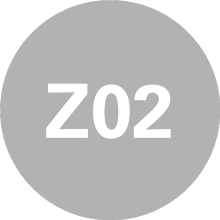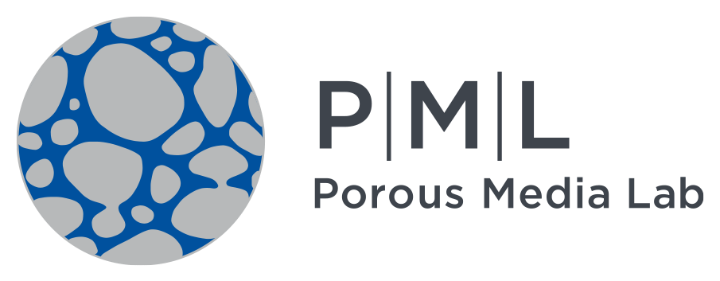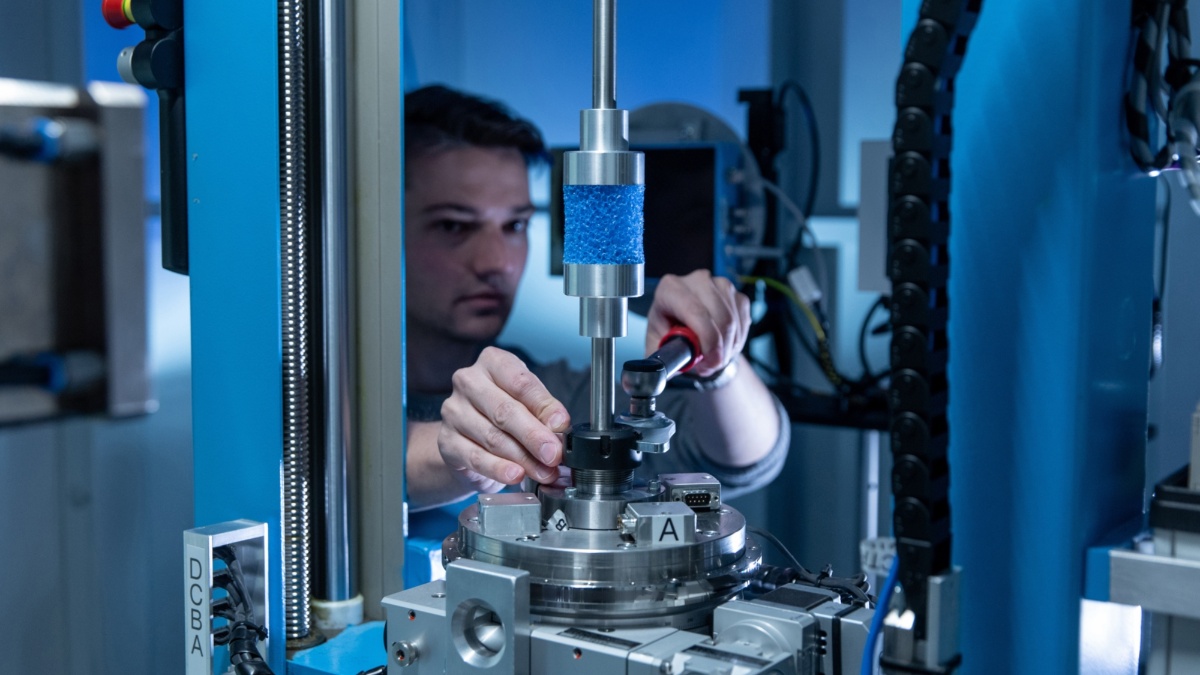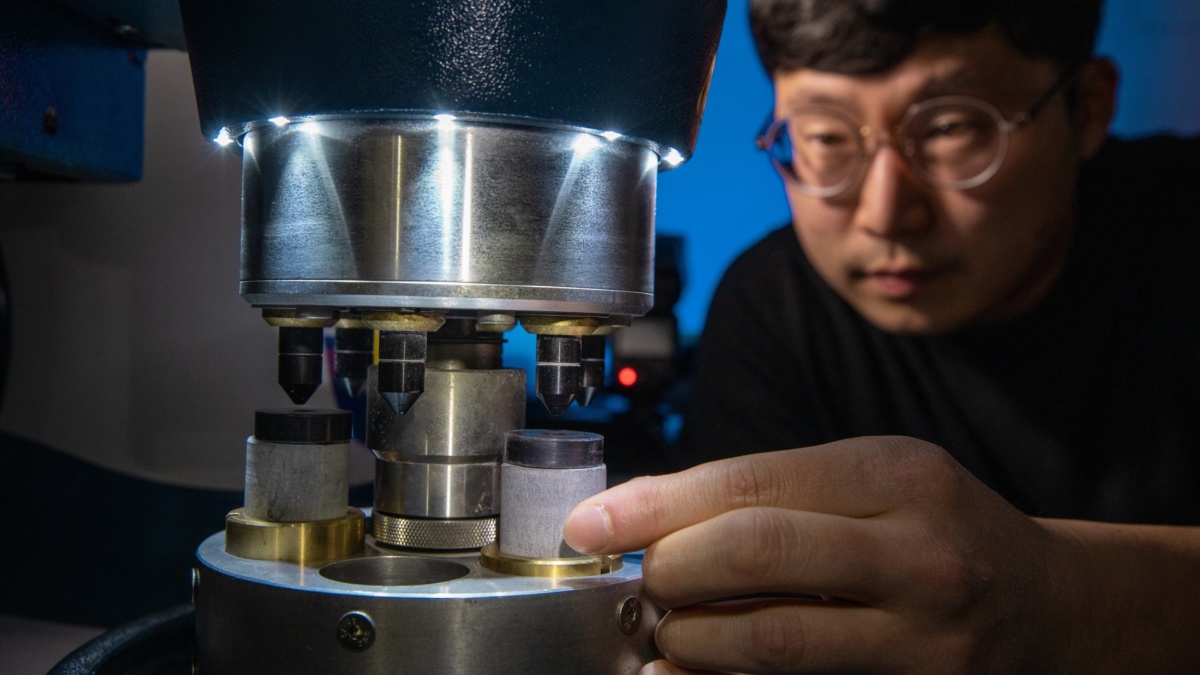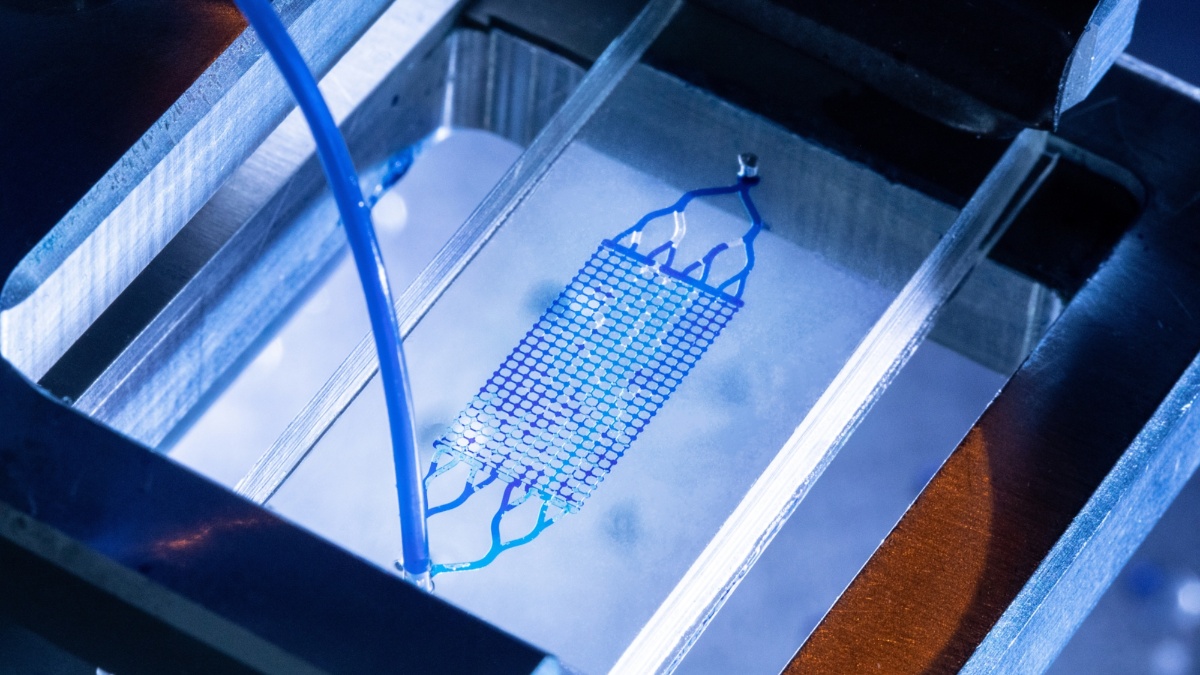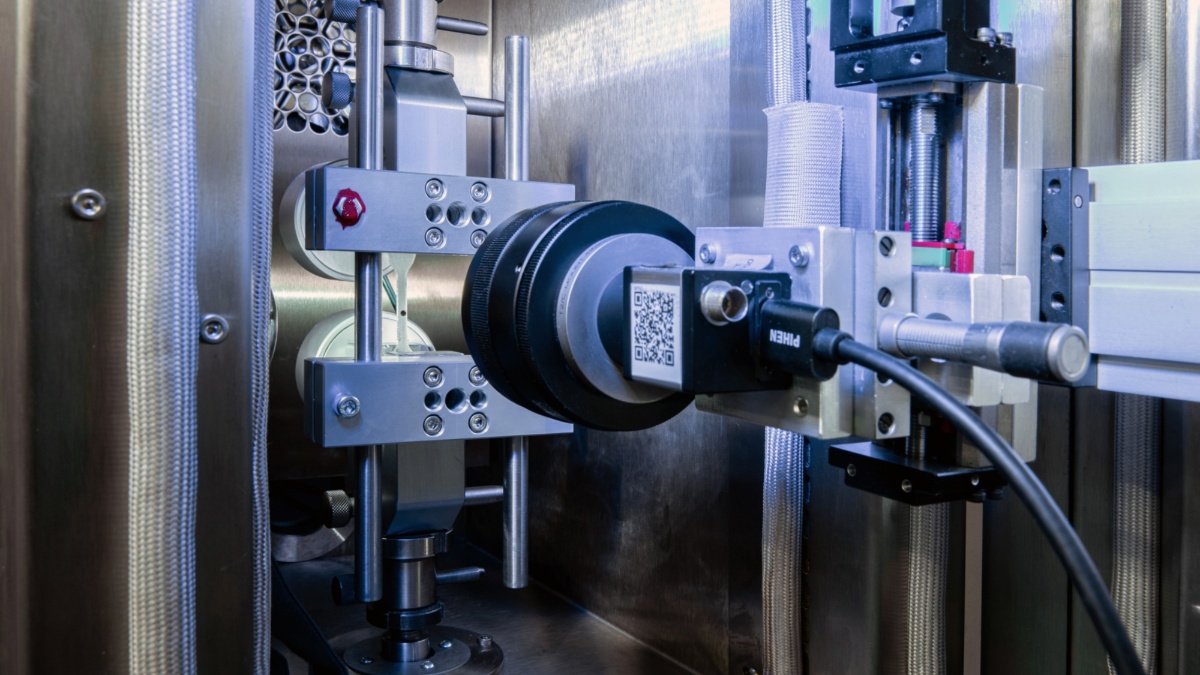People
Publications
Preprints
- Rivas, Y., Karadimitriou, N., Steeb, H., Ehlers, W., & Wagner, A. (2025). Fluid flow in thin fractured porous media using a TPM-phase-field model and microfluidic experiments. In Research Square preprint Research Square:6077893. Springer Science and Business Media LLC. https://doi.org/10.21203/rs.3.rs-6077893/v1
Conference Papers
- Valavanides, M. S., Karadimitriou, N., & Steeb, H. (2022). Flow Dependent Relative Permeability Scaling for Steady-State Two-Phase Flow in Porous Media: Laboratory Validation on a Microfluidic Network. SPWLA 63rd Annual Logging Symposium Transactions. https://doi.org/10.30632/spwla-2022-0054
Journal Articles
- Gao, H., Tatomir, A. B., Zhou, D., Karadimitriou, N. K., Steeb, H., & Sauter, M. (2025). Reservoir characterization by push-pull tests employing kinetic interface sensitive tracers - Quantification of residual trapping in geological storage of carbon dioxide. Journal of Hydrology, 659. https://doi.org/10.1016/j.jhydrol.2025.133240
- Krach, D., Ruf, M., & Steeb, H. (2025). POREMAPS: A finite difference based Porous Media Anisotropic Permeability Solver for Stokes flow. InterPore Journal, 2, Article 1. https://doi.org/10.69631/ipj.v2i1nr39
- Krach, D., Weinhardt, F., Wang, M., Schneider, M., Class, H., & Steeb, H. (2025). A novel geometry-informed drag term formulation for pseudo-3D Stokes simulations with varying apertures. Advances in Water Resources, 195. https://doi.org/10.1016/j.advwatres.2024.104860
- Gao, H., Abdullah, H., Tatomir, A. B., Karadimitriou, N. K., Steeb, H., Zhou, D., Liu, Q., & Sauter, M. (2024). Pore-scale study of the effects of grain size on the capillary-associated interfacial area during primary drainage. Journal of Hydrology, 632, 130865. https://doi.org/10.1016/j.jhydrol.2024.130865
- Lee, D., Ruf, M., Karadimitriou, N., Steeb, H., Manousidaki, M., Varouchakis, E. A., Tzortzakis, S., & Yiotis, A. (2024). Development of stochastically reconstructed 3D porous media micromodels using additive manufacturing: numerical and experimental validation. Scientific Reports, 14, Article 1. https://doi.org/10.1038/s41598-024-60075-w
- Shokri, J., Ruf, M., Lee, D., Mohammadrezaei, S., Steeb, H., & Niasar, V. (2024). Exploring Carbonate Rock Dissolution Dynamics and the Influence of Rock Mineralogy in CO2 Injection. Environmental Science & Technology, 58, Article 6. https://doi.org/10.1021/acs.est.3c06758
- Straub, A., Karadimitriou, N., Reina, G., Frey, S., Steeb, H., & Ertl, T. (2024). Visual Analysis of Displacement Processes in Porous Media using Spatio-Temporal Flow Graphs. IEEE Transactions on Visualization and Computer Graphics, 30, Article 1. https://doi.org/10.1109/TVCG.2023.3326931
- Vahid Dastjerdi, S., Karadimitriou, N., Hassanizadeh, S. M., & Steeb, H. (2024). Formation of Common Preferential Two-Phase Displacement Pathways in Porous Media. Water Resources Research, 60. https://doi.org/10.1029/2024wr037266
- Wachsmann, S. B., Ruf, M., Prinz, C., Oehlsen, N., Zhou, X., Dyballa, M., Arweiler, C., Leistner, P., Steeb, H., Garrecht, H., Laschat, S., & Stegbauer, L. (2024). Chitin/Chitosan Biocomposite Foams with Chitins from Different Organisms for Sound Absorption. ACS Sustainable Chemistry & Engineering, 12, 11879–11890. https://doi.org/10.1021/acssuschemeng.4c00044
- Wang, J., Sonntag, A., Lee, D., Xotta, G., Salomoni, V. A., Steeb, H., Wagner, A., & Ehlers, W. (2024). Modelling and simulation of natural hydraulic fracturing applied to experiments on natural sandstone cores. Acta Geotechnica, 19, 7709–7725. https://doi.org/10.1007/s11440-024-02351-7
- Dastjerdi, S. V., Karadimitriou, N., Hassanizadeh, S. M., & Steeb, H. (2023). Experimental evaluation of fluid connectivity in two-phase flow in porous media. Advances in Water Resources, 172, 104378. https://doi.org/10.1016/j.advwatres.2023.104378
- Gao, H., Tatomir, A. B., Karadimitriou, N. K., Steeb, H., & Sauter, M. (2023). Reservoir characterization by push-pull tests employing kinetic interface sensitive tracers - a pore-scale study for understanding large-scale processes. Advances in Water Resources, 174, 104424. https://doi.org/10.1016/j.advwatres.2023.104424
- Gao, H., Tatomir, A. B., Karadimitriou, N. K., Steeb, H., & Sauter, M. (2023). Effect of Pore Space Stagnant Zones on Interphase Mass Transfer in Porous Media, for Two-Phase Flow Conditions. Transport in Porous Media, 146, Article 3. https://doi.org/10.1007/s11242-022-01879-0
- Karadimitriou, N., Valavanides, M. S., Mouravas, K., & Steeb, H. (2023). Flow-Dependent Relative Permeability Scaling for Steady-State Two-Phase Flow in Porous Media: Laboratory Validation on a Microfluidic Network. Petrophysics - the SPWLA Journal of Formation Evaluation and Reservoir Description, 64, Article 5. https://doi.org/10.30632/pjv64n5-2023a4
- Lee, D., Weinhardt, F., Hommel, J., Piotrowski, J., Class, H., & Steeb, H. (2023). Machine learning assists in increasing the time resolution of X-ray computed tomography applied to mineral precipitation in porous media. Scientific Reports, 13. https://doi.org/10.1038/s41598-023-37523-0
- Ruf, M., Lee, D., & Steeb, H. (2023). A multifunctional mechanical testing stage for micro X-ray computed tomography. Review of Scientific Instruments, 94. https://doi.org/10.1063/5.0153042
- Taghizadeh, K., Ruf, M., Luding, S., & Steeb, H. (2023). X-ray 3D imaging-based microunderstanding of granular mixtures: Stiffness enhancement by adding small fractions of soft particles. Proceedings of the National Academy of Sciences of the United States of America, 120. https://doi.org/10.1073/pnas.2219999120
- Valavanides, M. S. (2023). Flow Rate Dependency of Steady-State Two-Phase Flows in Pore Networks: Universal, Relative Permeability Scaling Function and System-Characteristic Invariants. Environmental Science & Technology, 150, 521–557. https://doi.org/10.1007/s11242-023-02012-5
- Hommel, J., Gehring, L., Weinhardt, F., Ruf, M., & Steeb, H. (2022). Effects of Enzymatically Induced Carbonate Precipitation on Capillary Pressure-Saturation Relations. Minerals, 12. https://doi.org/10.3390/min12101186
- Kurzeja, P., & Steeb, H. (2022). Acoustic waves in saturated porous media with gas bubbles. Philosophical Transactions of the Royal Society A, 380. https://doi.org/10.1098/rsta.2021.0370
- Weinhardt, F., Deng, J., Hommel, J., Dastjerdi, S. V., Gerlach, R., Steeb, H., & Class, H. (2022). Spatiotemporal Distribution of Precipitates and Mineral Phase Transition During Biomineralization Affect Porosity-Permeability Relationships. Transport in Porous Media, 143, 527–549. https://doi.org/10.1007/s11242-022-01782-8
- Chen, Y., Steeb, H., Erfani, H., Karadimitriou, N. K., Walczak, M. S., Ruf, M., Lee, D., An, S., Hasan, S., Connolley, T., Vo, N. T., & Niasar, V. (2021). Nonuniqueness of hydrodynamic dispersion revealed using fast 4D synchrotron x-ray imaging. Science Advances, 7, Article 52. https://doi.org/10.1126/sciadv.abj0960
- Erfani, H., Karadimitriou, N. K., Nissan, A., Walczak, M. S., An, S., Berkowitz, B., & Niasar, V. (2021). Process-Dependent Solute Transport in Porous Media. Transport in Porous Media, 140, 421–435. https://doi.org/10.1007/s11242-021-01655-6
- Frey, S., Scheller, S., Karadimitriou, N., Lee, D., Reina, G., Steeb, H., & Ertl, T. (2021). Visual Analysis of Two-Phase Flow Displacement Processes in Porous Media. Computer Graphics Forum, 41, 243–256. https://doi.org/10.1111/cgf.14432
- Gao, H., Tatomir, A. B., Karadimitriou, N. K., Steeb, H., & Sauter, M. (2021). Effects of surface roughness on the kinetic interface-sensitive tracer transport during drainage processes. Advances in Water Resources, 157. https://doi.org/10.1016/j.advwatres.2021.104044
- Gao, H., Tatomir, A. B., Karadimitriou, N. K., Steeb, H., & Sauter, M. (2021). A Two-Phase, Pore-Scale Reactive Transport Model for the Kinetic Interface-Sensitive Tracer. Water Resources Research, 57, Article 6. https://doi.org/10.1029/2020wr028572
- von Wolff, L., Weinhardt, F., Class, H., Hommel, J., & Rohde, C. (2021). Investigation of Crystal Growth in Enzymatically Induced Calcite Precipitation by Micro-Fluidic Experimental Methods and Comparison with Mathematical Modeling. Transport in Porous Media, 137, 327–343. https://doi.org/10.1007/s11242-021-01560-y
- Wagner, A., Eggenweiler, E., Weinhardt, F., Trivedi, Z., Krach, D., Lohrmann, C., Jain, K., Karadimitriou, N., Bringedal, C., Voland, P., Holm, C., Class, H., Steeb, H., & Rybak, I. (2021). Permeability Estimation of Regular Porous Structures: A Benchmark for Comparison of Methods. Transport in Porous Media, 138, 1–23. https://doi.org/10.1007/s11242-021-01586-2
- Weinhardt, F., Class, H., Dastjerdi, S. V., Karadimitriou, N. K., Lee, D., & Steeb, H. (2021). Experimental Methods and Imaging for Enzymatically Induced Calcite Precipitation in a Microfluidic Cell. Water Resources Research, 57. https://doi.org/10.1029/2020wr029361
- Yiotis, A., Karadimitriou, N. K., Zarikos, I., & Steeb, H. (2021). Pore-scale effects during the transition from capillary- to viscosity-dominated flow dynamics within microfluidic porous-like domains. Scientific Reports, 11. https://doi.org/10.1038/s41598-021-83065-8
- Hasan, S., Niasar, V., Karadimitriou, N. K., Godinho, J. R. A., Vo, N. T., An, S., Rabbani, A., & Steeb, H. (2020). Direct characterization of solute transport in unsaturated porous media using fast X-ray synchrotron microtomography. Proceedings of the National Academy of Sciences of the United States of America, 117, 23443–23449. https://doi.org/10.1073/pnas.2011716117
- Konangi, S., Palakurthi, N. K., Karadimitriou, N. K., Comer, K., & Ghia, U. (2020). Comparison of Pore-scale Capillary Pressure to Macroscale Capillary Pressure using Direct Numerical Simulations of Drainage under Dynamic and Quasi-static Conditions. Advances in Water Resources, 147. https://doi.org/10.1016/j.advwatres.2020.103792
- Ruf, M., & Steeb, H. (2020). An open, modular, and flexible micro X-ray computed tomography system for research. Review of Scientific Instruments, 91. https://doi.org/10.1063/5.0019541
- Karadimitriou, N. K., Mahani, H., Steeb, H., & Niasar, V. (2019). Nonmonotonic Effects of Salinity on Wettability Alteration and Two-Phase Flow Dynamics in PDMS Micromodels. Water Resources Research, 55, 9826–9837. https://doi.org/10.1029/2018wr024252
Published data sets
- Karadimitriou, N., Lee, D., Vahid Dastjerdi, S., & Steeb, H. (2024). Primary drainage experiments and fractal dimensions [DaRUS]. https://doi.org/10.18419/DARUS-4114
- Krach, D., Ruf, M., & Steeb, H. (2024). POREMAPS 1.0.0: Code, Benchmarks, Applications [DaRUS]. https://doi.org/10.18419/DARUS-3676
- Krach, D., Weinhardt, F., Wang, M., Schneider, M., Class, H., & Steeb, H. (2024). Results for pseudo-3D Stokes simulations with a geometry-informed drag term formulation for porous media with varying apertures [DaRUS]. https://doi.org/10.18419/DARUS-4347
- Krach, D., Weinhardt, F., Wang, M., Schneider, M., Class, H., & Steeb, H. (2024). Code and benchmarks for geometry-informed drag term computation for pseudo-3D Stokes simulations with varying apertures [DaRUS]. https://doi.org/10.18419/DARUS-4313
- Karadimitriou, N., Lee, D., & Steeb, H. (2023). Visual characterization of displacement processes in porous media [DaRUS]. https://doi.org/10.18419/DARUS-3615
- Lee, D., Ruf, M., Yiotis, A., & Steeb, H. (2023). Numerical investigation results of 3D porous structures using stochastic reconstruction algorithm [DaRUS]. https://doi.org/10.18419/DARUS-3244
- Lee, D., & Steeb, H. (2023). Image enhancement code: time-resolved tomograms of EICP application using 3D U-net [DaRUS]. https://doi.org/10.18419/DARUS-2991
- Lee, D., Weinhardt, F., Hommel, J., Class, H., & Steeb, H. (2023). Time resolved micro-XRCT dataset of Enzymatically Induced Calcite Precipitation (EICP) in sintered glass bead columns [DaRUS]. https://doi.org/10.18419/DARUS-2227
- Ruf, M., Lee, D., & Steeb, H. (2023). In situ performed fracturing experiment of a limestone sample using an X-ray transparent triaxial cell: micro-XRCT data sets and measurement data [DaRUS]. https://doi.org/10.18419/DARUS-3106
- Ruf, M., Lee, D., Yiotis, A., & Steeb, H. (2023). micro-XRCT datasets of stochastically reconstructed 3D porous media micromodels manufactured by additive manufacturing [DaRUS]. https://doi.org/10.18419/DARUS-3243
- Ruf, M., Taghizadeh, K., & Steeb, H. (2023). micro-XRCT data sets and in situ measured ultrasonic wave propagation of pre-stressed monodisperse rubber and glass particle mixtures with 10%, 20%, 40%, and 60% volume rubber content: sample 1 [DaRUS]. https://doi.org/10.18419/DARUS-3436
- Ruf, M., Taghizadeh, K., & Steeb, H. (2023). micro-XRCT data sets and in situ measured ultrasonic wave propagation of pre-stressed monodisperse rubber and glass particle mixtures with 10%, 20%, and 30% volume rubber content: samples 2 and 3 [DaRUS]. https://doi.org/10.18419/DARUS-3437
- Hommel, J., & Gehring, L. (2022). Enzymatically induced carbonate precipitation and its effect on capillary pressure-saturation relations of porous media - column samples [DaRUS]. https://doi.org/10.18419/DARUS-1713
- Hommel, J., & Weinhardt, F. (2022). Enzymatically induced carbonate precipitation and its effect on capillary pressure-saturation relations of porous media - microfluidics samples [DaRUS]. https://doi.org/10.18419/DARUS-2791
- Karadimitriou, N., Steeb, H., & Valavanides, M. (2022). Pressure and volumetric flux measurements intended to scale relative permeability under steady state, co-flow conditions, in a PDMS micromodel. https://doi.org/10.18419/DARUS-2816
- Ruf, M., Hommel, J., & Steeb, H. (2022). Enzymatically induced carbonate precipitation and its effect on capillary pressure-saturation relations of porous media - micro-XRCT dataset of high column (sample 4) [DaRUS]. https://doi.org/10.18419/DARUS-2907
- Ruf, M., Hommel, J., & Steeb, H. (2022). Enzymatically induced carbonate precipitation and its effect on capillary pressure-saturation relations of porous media - micro-XRCT dataset of low column (sample 10) [DaRUS]. https://doi.org/10.18419/DARUS-2908
- Ruf, M., Hommel, J., & Steeb, H. (2022). Enzymatically induced carbonate precipitation and its effect on capillary pressure-saturation relations of porous media - micro-XRCT dataset of medium column (sample 3) [DaRUS]. https://doi.org/10.18419/DARUS-2906
- Ruf, M., Taghizadeh, K., & Steeb, H. (2022). micro-XRCT data sets and in situ measured ultrasonic wave propagation of a pre-stressed monodisperse rubber and glass particle mixture with 30% volume rubber content [DaRUS]. https://doi.org/10.18419/DARUS-2833
- Weinhardt, F., Deng, J., Steeb, H., & Class, H. (2022). Optical Microscopy and log data of Enzymatically Induced Calcite Precipitation (EICP) in microfluidic cells (Quasi-2D-structure) [DaRUS]. https://doi.org/10.18419/DARUS-1799
- Ruf, M., Taghizadeh, K., & Steeb, H. (2021). micro-XRCT data sets and in situ measured ultrasonic wave propagation of a pre-stressed monodisperse rubber and glass particle mixture with 50% volume rubber content [DaRUS]. https://doi.org/10.18419/DARUS-2208
Research
About this Project
The service project “Porous Media Lab (PML)”, launched in the second funding period of the SFB 1313, builds on the former Task Force Experiments and is established as a centralized experimental platform. Project Z02 actively supports cross-project collaborations by generating experimental data for benchmarking and model validation purposes, while also developing novel artificial porous media using unconventional raw materials and advanced fabrication techniques. Furthermore, it is anticipated to pursue independent research in flow and transport, and to create innovative experimental setups for applications that complement the broader goals of the SFB 1313 projects.
Results
Funding Period 1
Project Z02 was not yet part of the SFB 1313 during the first funding phase.
Funding Period 2
Z02 achieved significant progress in understanding interfacial phenomena, microfluidics, modelling, and multiphase flow in porous media. Experimental challenges in microfabrication were tackled, and we successfully developed micromodels with free-flow and porous domains. These enabled comparisons with numerical simulations from A02 and C01, while Teflon/PDMS experiments validated models from A01. Studies of fractures and fluids led to μPIV and μXRCT experiments in collaboration with B03, B05, and B02, supported by international collaborators V. Niasar, A. Raoof, A. Yiotis, and M. Sauter. Despite limitations in hydraulic fracturing tests, novel drainage-imbibition experiments initiated further work. We also focused on building robust micromodels using alternative materials like NOA 81, progressing toward pressure-resilient systems. New multi-layer micromodels now aid validation efforts in collaboration with C04 and B02.
Advanced experimental setups for high-speed microfluidics, fluorescence imaging, and thermal analysis were developed. These setups support studies in B02 and are key to upcoming publications. An in-house high-pressure triaxial cell, developed with B05, allows precise strain and acoustic testing of rock samples. μXRCT infrastructure was enhanced through a multifunctional mechanical testing stage with optimized flexure elements to align rotation centres, while a next-generation system with phase-contrast and spectral imaging capabilities is in development and will be set-up in 2025. Additional, tools like the Psylotech xTS test rig and the PandABox triggering system were introduced for advanced in-situ lab- and synchrotron-based experiments. Notably, collaborations with C05, D01, and D03 led to the MPI-parallelized POREMAPS solver directly applied to XRCT-datasets and real-time visualization tools, boosting permeability simulations and dynamic data analysis. Internationally, our work with M. Hassanizadeh, M. Valavanides, and V. Niasar deepened the theoretical foundation and extended SFB 1313’s scope into global academic partnerships.
Future Work
We intend to significantly advance in-situ imaging techniques for exploring coupled physical and chemical processes in porous media. Building on existing μXRCT capabilities, a further new generation μXRCT system is being integrated allowing faster and more detailed imaging. This will further enhance visualization of evolving pore morphologies such as evaporation-driven salt precipitation and chemical-induced calcite dissolution. In close collaboration with B05, combined DMA-fatigue tests at higher excitation on bio-concrete micro core samples (prepared by C04) will be conducted under in-situ μXRCT imaging to visualize fracture propagation and to improve the mechanistic understanding of fatigue-damage phenomena on the pore-scale. The setup involves a high-voltage piezoelectric actuator and an X-ray transparent triaxial cell, allowing cyclic uniaxial loading under different (static) triaxial stress conditions while enabling imaging. These tests will be guided by stiffness degradation metrics, triggering time-lapse imaging supported by the visualization toolbox developed with D01. Advanced imaging methods like phase-contrast and spectral μXRCT (developed with C05) will further improve phase differentiation in similar-attenuation materials like brine and salt crystals. International collaboration with Mercator fellow V. Niasar and his doctoral researcher J. Shokri led to studies on calcite dissolution under CO₂ injection, with a joint publication and upcoming beamtime at Diamond Light Source (DLS) (UK's national synchrotron science facility) to examine salt precipitation dynamics in porous reservoirs.
In parallel, microfluidic experiments are conducted to study multiphase flow, evaporation, deformation, and phase transitions. Collaborations with A02, B02, C06, A03, and B05 are expected to support studies on viscous coupling, magnetic-field-induced deformation, and particle transport. Experiments with C04 examined calcite precipitation and dissolution under reactive flow, relevant to karst systems and carbonate-rich reservoirs. μPIV and optical imaging provided insight into porosity changes and transport processes. Notably, collaborative research with C01, and A02, along with external partner and Humboldt fellow B. Guo (University of Arizona, USA), will explore salt precipitation in stratified porous media. The first results highlight the role of pore size on localized versus widespread crystallization, with implications for capillary-driven transport and evaporation. Additionally, the thermally driven Marangoni effect was investigated with Mercator fellow V. Niasar, offering insight into its role in salt accumulation and ion mobility. A comprehensive experimental campaign in FP 3 will validate these findings, contributing broadly to SFB 1313’s focus on salt dynamics in partially saturated systems.
International Cooperation
University of Manchester, UK
With Mercator fellow V. Niasar we have been collaborating on calcite dissolution in fractured carbonate rocks under CO₂ injection (Shorki et al. 2024). This has led to a successful beamtime proposal at Diamond Light Source (DLS), UK for 4D μXRCT imaging of salt precipitation and permeability impairment. Additionally, we have been working on the investigation of the Marangoni effect and its role in salt accumulation and ion mobility using μPIV systems together with his doctoral researcher Farzaneh Nazari.
University of Arizona, USA
With our external partner and Humoldt fellow B. Guo, we have been collaborating on investigating the effects of pore-scale structure on salt crystallization in stratified porous media with microfluidic characterization methods.
University of Utrecht, Netherlands
Raoof contributed to resolving fabrication issues related to SU-8 wafers in collaboration with B05. His institution provided access to mask-based lithography tools that were essential for fabricating micromodels with defined porous and free-flow regions. This international partnership helped overcome early cleanroom access limitations and allowed continuation of microfluidic experiments.
Technical University of Crete, Greece
With our international partner A. Yiotis we collaborated on the integration of μXRCT imaging and microfluidics to study fracture networks in porous rocks. His contribution included comparison with Lattice Boltzmann simulations and geostatistical models, offering a valuable theoretical and computational framework to interpret experimental observations. This partnership was instrumental in understanding flow and structural dynamics at the pore scale (Lee et al. 2024).
University of West Attica, Greece
With M. Valavanides we collaborated on experiments and modelling simultaneous phase flow in porous media (Karadimitriou et al. 2023). His involvement also included joined supervision of K. Mouravas, who undertook a research stay from 01/03/2023 until 31/08/2023 under the Erasmus+ programme, and has begun doctoral research in 2025 under joint supervision with H. Steeb. This research is embedded in the SFB 1313 associated research project AX6, and is expected to continue through further research stays in Stuttgart, emphasizing long-term collaboration and knowledge exchange.
Contact

Holger Steeb
Prof. Dr.-Ing.Spokesperson, Project Leader, Research Projects B05, C05, and Z02, Project WIKO, Central Project Z

Nikolaos K. Karadimitriou
Dr.Project Leader, Project Z02 (PML)
[Image: Max Kovalenko]


